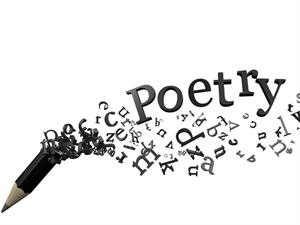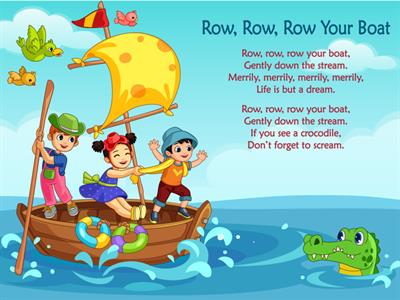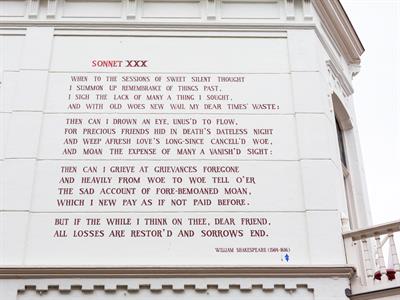
PUMPA - SMART LEARNING
எங்கள் ஆசிரியர்களுடன் 1-ஆன்-1 ஆலோசனை நேரத்தைப் பெறுங்கள். டாப்பர் ஆவதற்கு நாங்கள் பயிற்சி அளிப்போம்
Book Free DemoPoem (a.k.a poetry or verse) is a form of creative writing in which the expression of feelings and ideas is given intensity by particular attention to diction (sometimes involving rhyme), rhythm, and imagery.

Characteristics of a poem:
Length: Though there is no definite length, poems can be as short as two lines or as long as two lakh lines.
Theme: Poems can have themes which are severe or trivial. It can explore nonsensical themes like the ones seen in a light verse or deal with higher subjects as seen in epics such as Vyasa's "Mahabharata" or Dante's "Divine Comedy".
Meaning: Poetry is like a puzzle. One can unearth any amount of meanings from a poem. But a poem can also be straightforward.
Sentence pattern: Unlike prose, poetry does not follow the conventional sentence pattern. The words are usually in a jumbled order.
Rhythm: Poetry contains a rhythm that is not typically seen in prose pieces. The meter, rhyme, or the placement of words provide rhythm to the poem.
Rhyme and wordplay: Poems may or may not have rhyming lines. Moreover, several poetic devices and figures such as alliteration, repetition, metaphor, and simile are generally used.
Hence, poems are not restricted to specific features. At the same time, not all writing can be classified as poems.
How to write a poem?

The following steps can be followed while writing a poem. Of course, poems have no specific rules, and you are free to explore and experiment.
- Find the inspiration: You cannot write a poem by waving your magic wand. Poems are born out of inspiration. You should be moved or inspired by an idea or a topic before you could produce a poem.
- Look within: Poem is a channel through which the writer expresses his or her emotions and thoughts. The emotion could be something that is intimate to the writer, or could be a result of a public event. No matter what, poems always travel through the mind of the writer, Hence, look within yourself and identify the emotion.
- The key is to start: You cannot force a poem out of your brain—even the lengthiest poem or writing branch out from a single idea or word. The key point here is to find that unique word or thought to build your key idea.
- Decide on a style: As you begin and reach a flow, you can start channelling your poem depending on the desired style. In most cases, your style (such as the rhyme/ free verse, short/long) depends largely on your mood. However, interestingly, poems have a life of its own, and hence you may let the poem take control of your thoughts.
- Pick a heading: Heading is the heart of the poem. Choose wisely. For instance, if your poem is highly metaphorical and the meanings are well hidden, you can try choosing a heading that suggests your intended meaning.
- Edit or revise: After the completion of the poem, re-read it and do the necessary editing.
- Read extensively: Reading various poems and literary pieces will enrich your vocabulary, refine your thoughts, and enhance your style.

The above picture contains one of the classics rhymes in English language. Though never considered as serious poetry, it is poem loved and appreciated by people of all ages.

The above picture contains a sonnet written by William Shakespeare. Write a poem as grand as this, and your poem might just become worthy of being studied in schools and even get displayed on a wall such as this.
Example:
The following is an example of a nonsensical poem inspired by Shel Silverstein's "Whatifs":
The Baffling Whatifs
Whatif I go late to school?
Whatif I turn into a fool?
Whatif my mother forgets my lunch?
Whatif I get on my nose a punch?
Whatif my eyes go blind?
And whatif my friends are not kind?
Baffled by all those whatifs
I see now that they are exciting motifs.
~ A poem by Sem Rowsten